- Introduction
- Heat exposure
- Exposure to radiation and toxic substances in war environments
- Exposure to pesticides, solvents and other chemicals
Introduction
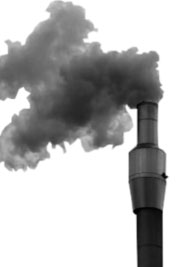
While environmental chemicals and toxins are found in many environments, they are most commonly found at dangerous concentrations in occupational environments, such as chemicals used in agricultural and manufacturing sector workplaces. There are also many more environmental exposures which potentially increase the risk of male infertility but have not yet been studied (e.g. hundreds of chemicals are now used in manufacturing and other industries, and all are likely to have different health effects, but the effects on male infertility have been studied for only a few). The environmental factors which have evidence of an association with male infertility, include heat, radiation, chemicals and trauma.
Heat exposure
Sperm production in humans and other mammals is dependent on the temperature of the testicles. Sperm is optimally produced when the testicles are 2-4oC below body temperature. The temperature of the testes is regulated by the scrotum (which expands and contracts to facilitate heat transfer) and heat exchange between blood flowing into the testes via the arteries in the spermatic cord, and that flowing out of the testes via the veins in the spermatic cord. This results in the pre-cooling of blood entering the testes, although the pre-cooling mechanism can only regulate testicular temperature to an extent.
In situations of extreme heat, the scrotum’s natural cooling mechanisms may be insufficient to prevent a rise in testicular temperature. The increased testicular temperature may affect both the quality and quantity of sperm produced.
Some men expose themselves to extremely high temperatures in their day to day life, for example by taking hot baths. However, the majority of unsafe heat exposure occurs in occupational situations. A number of studies have demonstrated an association between sperm quality and heat exposure. A large case control study found that men exposed to heat because of their occupation were 1.8 times more likely to have morphologically abnormal sperm. They were also 1.8 times more likely to have been trying unsuccessfully to conceive for more than one year, than men who had not been occupationally exposed to heat.
Studies have also demonstrated that the following occupational groups have a higher risk of infertility, which is thought to be related (at least in part) to testicular heat exposure.
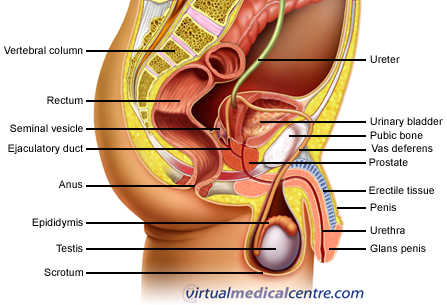
One study at an infertility clinic found that occupational drivers accounted for 9.4% of patients but only 3.8% of the general population. Drivers are thought to be at greater risk of infertility because long periods of sitting can increase testicular heat, as the testicles are insulated by the thighs whilst a man is seated.
One study comparing oven operators to other, non-heat exposed workers in a ceramic factory reported that significantly greater proportions of oven operators were childless (7.6% of oven operators compared to 1.1% who don’t work in that industry) and reported difficulty conceiving (23% of oven operators compared to 12% of men not in that industry). The semen of the oven operators contained significantly less motile sperm (7% motile) than that of the other workers in the ceramic factory (who had 28% motile sperm).
One study reported that a significantly lower proportion of men in the baking profession conceived within three (14%) or six months (29%) than men working in non-heat exposed professions (55% at three months, 74% at six months).
Exposure to radiation and toxic substances in war environments
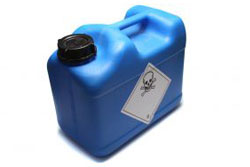
A French study found that men who had worked on a nuclear submarine were 2.9 times more likely to be infertile than men who had not. It is most likely that this decreased fertility was related to suboptimal sperm production. Other studies have demonstrated that radiation exposure affects testicular function and spermatogenesis (as opposed to other male infertility factors like sperm transport and sexual function).
Another study of gulf war veterans reported that returned servicemen who participated in the 1990-1991 Gulf war were 41% more likely to be infertile than servicemen who were not deployed to the Gulf region during that war. Similarly Gulf war veterans were 18% more likely than non-deployed servicemen to take more than one year to conceive. The authors of this study believed that sub-fertility in Gulf War veterans was caused by impaired spermatogenesis, caused by toxic exposure during the war.
Exposure to radiation during radiotherapy for cancer treatment is also a known risk factor for testicular failure in men. Impairment of sperm production is dose dependent. This means that the higher the dose or longer the direction of radiotherapy, the more likely sperm production is to be impaired. Recovery of testicular function following radiotherapy typically takes more than five years.
Exposure to pesticides, solvents and other chemicals
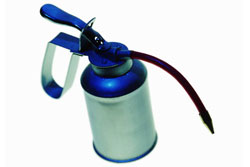
Another study of men attending an Argentinean infertility clinic found a link between pesticide exposure and sperm concentration, output and motility less than would be expected. The greater an individual’s exposure to pesticides, the more likely their sperm concentration, output, motility and proportion of morphologically normal sperm would be reduced. Exposure to glycol ether has also been shown to increase the risk of suboptimal sperm production. There are numerous pesticides which have not been studied in relation to male fertility and further research regarding these is necessary.
Chemotherapy
Chemotherapy medications used to treat cancer often cause infertility and the extent to which a man’s fertility is affected by chemotherapy depends on the type of chemotherapy drug used, the dose, duration of treatment and the man’s age when he is treated. Typically patients who are younger and taking lower medication doses are less likely to experience impaired fertility than older patients and those taking higher medication doses, however some chemotherapy medications are more likely to result in infertility than others.
Male subfertility or infertility following chemotherapy most commonly occurs as a result of damage to the germinal epithelium lining the tubules of the testis. This is the section of the testis where the germ cells from which sperm are produced reside.
A patient’s libido is often also affected by chemotherapy. This can be as a direct result of the medications or their side effects or because of the psychosocial effects of the treatment which may negatively affect a men’s ability to conceive.
The likelihood of a man developing impaired spermatogenesis also depends on the type of cancer. Amongst men with acute leukaemias, it is estimated that at least 21% experience some degree of subfertility following treatment. For other cancers such as tumours of Hodgkin’s disease and testicular cancers, the proportion of men experiencing impaired fertility is much higher (65-75%). In cases of testicular carcinoma or Hodgkin’s disease fertility is partially impaired as a result of the disease itself (i.e. impaired fertility is common even prior to chemotherapy). Fertility often recovers following chemotherapy, however typically not for many years.
Testicular trauma
Testicular trauma can negatively affect spermatogenesis, however scientists do not yet fully understand why.
How to protect sperm from environmental exposure

- Avoid occupations which involve exposure to extreme heat (e.g. baking, ceramics) or extreme testicular heat (e.g. driving, which requires long periods of sitting in a position in which the testicles are insulated);
- Avoid hot baths;
- Wear boxer shorts instead of tight underwear;
- Avoid occupations which involve high levels of exposure to radiation (e.g. military), and toxic chemicals (e.g. agriculture);
- Cryopreserve sperm for future use in assisted reproduction cycles if they are to undergo radiation therapy or chemotherapy.
- Evidence from laboratory studies of rats suggests that hormone treatment prior to chemotherapy help protect fertility, however further studies on humans are necessary to confirm this result;
- Evidence suggests that following testicular trauma, testicular repair is more effective than removal of the injured testicle in protecting fertility.
For more information
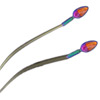 |
For more information on sperm health and male fertility, see Sperm Heal |
 |
For more information on workplace health including office ergonomics series, useful tips on avoiding injuries in the workplace and costs on the workforce, see Workplace Health. |
References
- Oliva, A. Spira, A. Multigner, L. Contribution of environmental factors to the risk of male infertility. Human Reprod. 2001;16(8):1768-76.
- Royal College of Obstetricians and Gynaecologists. Fertility: Assessment and treatment for people with fertility problems – Clinical Guideline [online]. Royal College of Obstetricians and Gynaecologists. 2004 [cited 30 October 2008]. Available from URL: http://www.rcog.org.uk/index.asp?PageID=696
- McLachlan, R.I. de Krester, D.M. Male Infertility: The Case for Continued Research. MJA. 2001;174:116-7.
- Thonneua, P. Bujan, L. Multigner, L. Mieusett, R. Occupational Heat Exposure and Male Fertility: A Review. Human Reprod, 1998;13(8):2122-5.
- de la Calle, F.P. Rachou, E. le Martelot, M, et al Male Infertility Risk Factors in a French military population. Human Reprod, 2001;16(3):481-6.
- Alvarez, J.G. Nurture vs Nature: how can we optimise sperm quality. J Andrology, 2003;24(5):640-8.
- Maconochie, N. Doyle, P. Carson, C. Infertility among male UK veterans of the 1990-01 Gulf war: reproductive cohort study. BMJ, 2004;329(7459):323.
- Juhler, R.K. Larsen, S.B. Meyer, O. Human semen quality in relation to dietary pesticide exposure and organic diet Arch Environ Contam Toxicol, 1999;37(3):415-23.
- Cherry, N. Moore, H. McNamee, R. et al. Occupation and male infertility: glycol ethers and other exposures. Occup Environ Med. 2008;65:708-14.
- Lenz, K.I. Valley, A.W. Review: Infertility after chemotherapy: a review of the risks and strategies for prevention. J Oncol Pharm Pract. 1996;2:75-100.
- Shaul, D. Xie, H. Diaz, J. et al. Surgical treatment of testicular trauma: effects on fertility and testicular histology. J Pediat Surg. 1997;32(1):84-7.
- Hirsch, A. Male Subfertility [Clinical Review]. BMJ. 2003;327:669-72.
- Meistrich, M.L. Wilson, G. Ye, W.S. et al. Relationship among hormonal treatments, suppression of spermatogenesis, and testicular protection from chemotherapy-induced damage. J Clin Oncol. 1997;15:3488-95.
- Delic, J.I. Protection of spermatogenesis during cancer chemotherapy. Sys Biol Reprod Med. 1987;18(3):211-3.
- Lin, W. Kim, E. Quesada, L. et al. Unilateral testicular injury from external trauma: evaluation of semen quality and endocrine parameters. J Urol. 1998;159(3):841-3.
All content and media on the HealthEngine Blog is created and published online for informational purposes only. It is not intended to be a substitute for professional medical advice and should not be relied on as health or personal advice. Always seek the guidance of your doctor or other qualified health professional with any questions you may have regarding your health or a medical condition. Never disregard the advice of a medical professional, or delay in seeking it because of something you have read on this Website. If you think you may have a medical emergency, call your doctor, go to the nearest hospital emergency department, or call the emergency services immediately.







